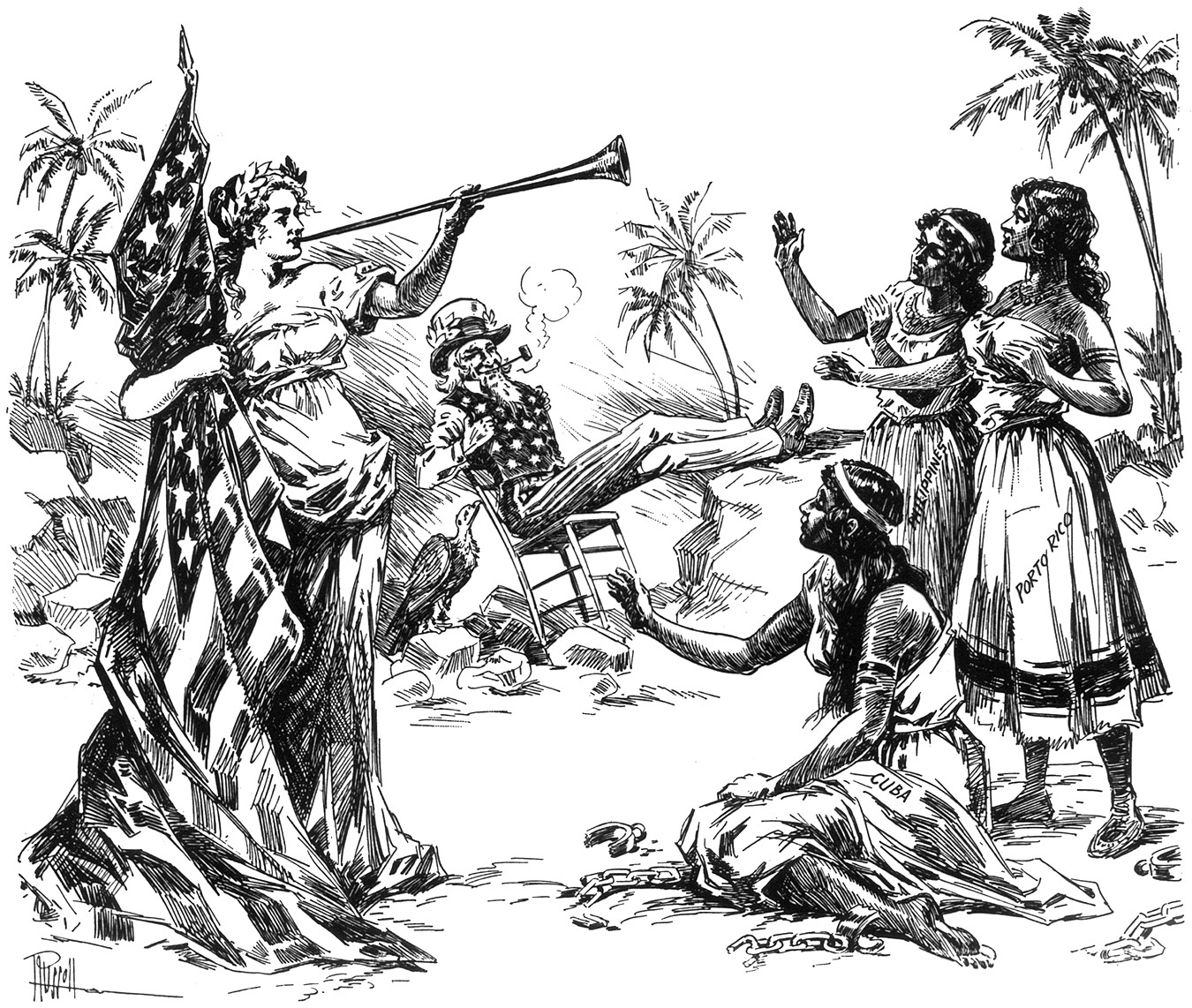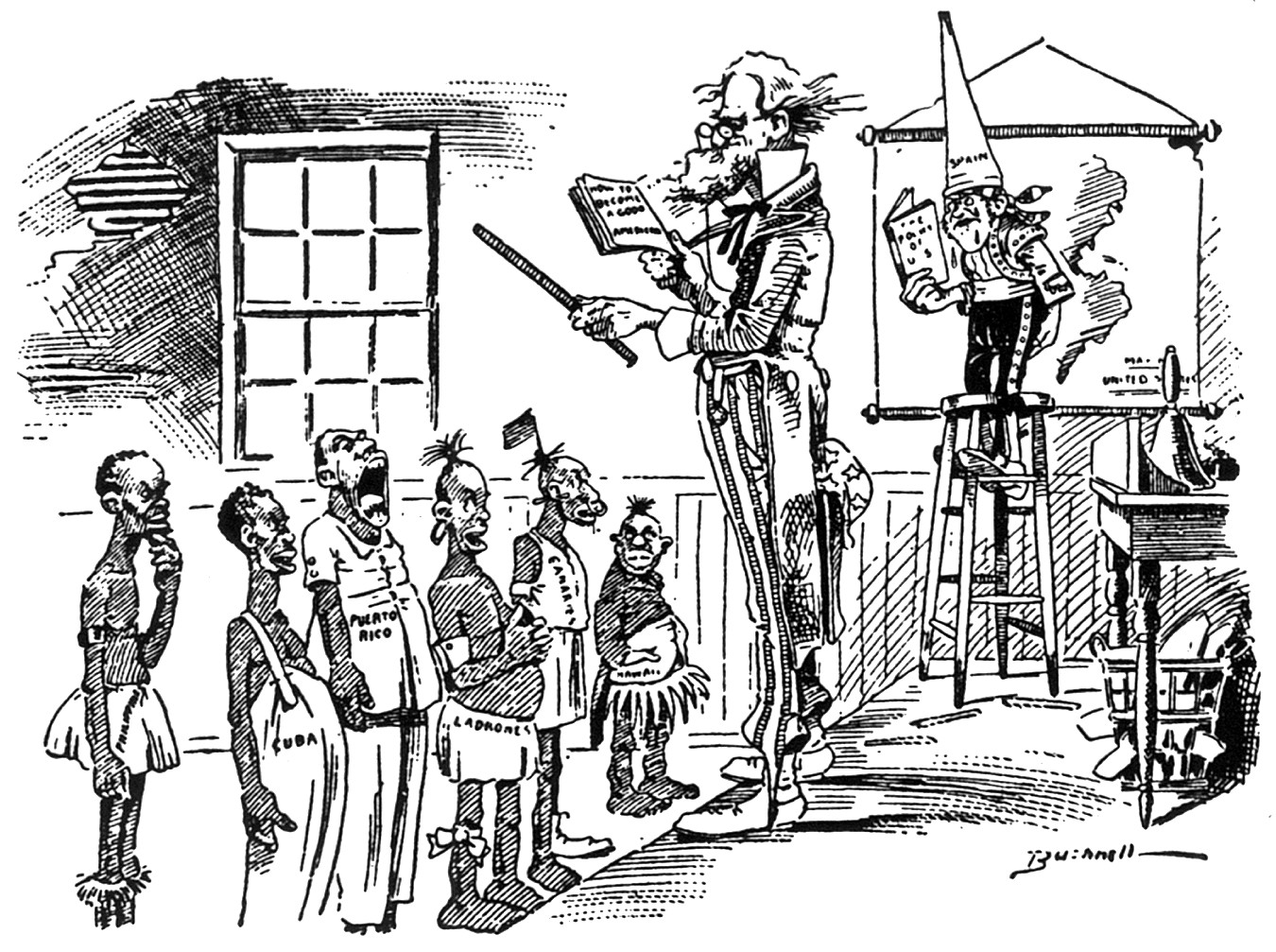The purpose of this two-part activity is to learn about techniques for working with political cartoons.
Read a scholarly article on how to analyze 1898 political cartoons
Read Fred Gleach’s article, “Images of Empire: Popular Representations of the 1898 War.” and respond to the following:
- In your own words, how does Gleach define “representations”?
- Did American image representations of Caribbeans start in 1898? If not, then when?
- What were the cultural meanings assigned to non-European Others by Americans in the 16th century? What about the 19th century?
- According to the author, why is it so difficult to make sense of visual representations produced in the past?
- What does it mean to “read against the grain”? Name some of the techniques used by the author.
- How did visual representations in the 1890s depict Spanish barbaric incompetence?
- Based on the images studied in the article, would you say U.S. newspapers were in support of American imperialism? How do they illustrate American military might?
- How do representations of “The Maine” through political cartoons convey meanings that change over time?
- Why are the 1898 War depictions of the Caribbean landscapes and peoples so problematic? How are each culture characterized?
- Could these short-lived period of 1898 American political cartoons have long-term impacts still felt today? Think of current examples.
Analyze a Cartoon
In this activity, you will choose one political cartoon from the following selection. Describe your observations and write down historical questions you may still have.
- Name your selected cartoon.
- List the symbols that you see and describe what is interesting about them.
- In what ways does symbolism help the cartoonist make his point?
- What is the main message depicted?
- Take a closer look and explain how the captions (words) in the cartoon clarify the symbols and the main message.
- Do you find the cartoon persuasive? What are the main techniques used?
- What type of audience would agree or disagree with the cartoon’s message?
- What are the diminishing processes behind these depictions of Caribbean populations? Can these past viewings be persistent and problematic even to the present day? How so?
- Write at least three in-depth questions that can lead you to understanding the “big-picture” of this cartoon.

